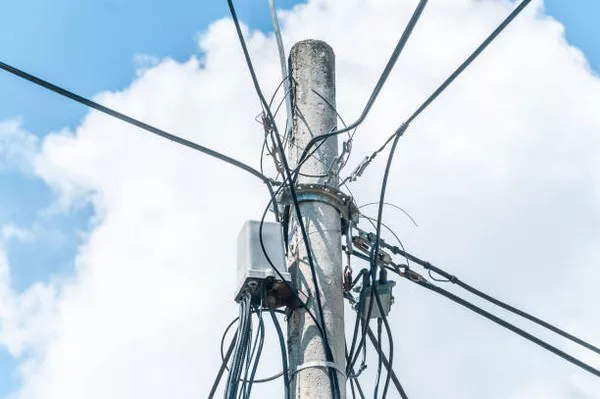In the world of electrical engineering and power distribution, isolation transformers play a crucial role in ensuring safety, reducing noise, and preventing equipment damage. An isolation transformer is a type of transformer that is designed to isolate the primary circuit from the secondary circuit, effectively breaking the electrical connection between them. This article explores the workings, applications, benefits, and considerations of isolation transformers in various industries.
What is an Isolation Transformer?
An isolation transformer is a transformer that has its primary and secondary windings physically separated from each other, usually by a dielectric insulation barrier. Unlike normal transformers that transfer electrical energy from one circuit to another while maintaining electrical continuity, isolation transformers are used to transfer electrical power from a source to a device without any direct metallic connection between the two circuits.
The key characteristic of an isolation transformer is its ability to isolate the output voltage from the input voltage. This means that even if there are fluctuations, noise, or disturbances in the primary circuit, they are not transferred to the secondary circuit. Isolation transformers are commonly used to protect sensitive equipment from electrical noise, voltage spikes, and ground loop problems.
Working Principle of Isolation Transformers
The working principle of an isolation transformer is based on the fundamental principles of electromagnetic induction. When an alternating current (AC) flows through the primary winding of the transformer, it creates a changing magnetic field. This magnetic field induces a voltage in the secondary winding, which then powers the connected load.
The primary and secondary windings of an isolation transformer are wound around a common magnetic core. However, unlike in standard transformers where the primary and secondary windings are in direct contact, in an isolation transformer, these windings are separated by insulation.
The insulation between the windings prevents direct electrical contact between the primary and secondary circuits. As a result, the secondary circuit is effectively isolated from the primary circuit, providing electrical safety and protection against electrical disturbances.
Applications of Isolation Transformers
Isolation transformers find applications in various industries and scenarios where electrical isolation and safety are paramount. Some common applications include:
Medical Equipment: Isolation transformers are used extensively in medical equipment to ensure patient safety by isolating the patient from the power source. This prevents the risk of electrical shocks and interference with sensitive medical devices.
Data Centers and IT Infrastructure: Isolation transformers are employed in data centers and IT infrastructure to protect sensitive electronic equipment, such as servers and networking devices, from electrical noise and ground loops.
Industrial Machinery: In industrial settings, isolation transformers are used to isolate machinery and equipment from the power supply, reducing the risk of electrical hazards and improving equipment performance.
Audio Equipment: Isolation transformers are used in audio equipment to eliminate ground loop problems, reduce noise, and improve audio quality.
Telecommunication Systems: Isolation transformers are used in telecommunication systems to isolate circuits and protect against power surges and electromagnetic interference (EMI).
Benefits of Isolation Transformers
The use of isolation transformers offers several key benefits:
Electrical Isolation: Isolation transformers provide complete electrical isolation between the primary and secondary circuits, ensuring safety and preventing electrical shocks.
Noise Reduction: Isolation transformers effectively filter out electrical noise and interference, improving the performance and reliability of connected equipment.
Surge Protection: Isolation transformers can protect equipment from power surges and voltage spikes, which can occur due to lightning strikes or other electrical disturbances.
Ground Loop Elimination: Isolation transformers help eliminate ground loop problems, which can cause humming or interference in audio and video systems.
Improved Equipment Performance: By isolating equipment from the power supply, isolation transformers can improve the performance and lifespan of sensitive electronic devices.
Considerations When Using Isolation Transformers
While isolation transformers offer significant benefits, there are some considerations to keep in mind when using them:
Cost: Isolation transformers can be more expensive than standard transformers due to the additional insulation and design requirements.
Size and Weight: Isolation transformers are often larger and heavier than standard transformers, which may impact installation and transportation.
Efficiency: Isolation transformers may have slightly lower efficiency compared to standard transformers due to losses associated with insulation and separation of windings.
Frequency Response: Some isolation transformers may have limited frequency response, which can impact their suitability for certain applications, such as high-frequency electronics.
Maintenance: Regular maintenance and inspection of isolation transformers are essential to ensure optimal performance and safety.
See also The Significance of KVA in Transformers: A Closer Look
Conclusion
Isolation transformers play a critical role in ensuring electrical safety, noise reduction, and equipment protection across various industries. By isolating the primary and secondary circuits, these transformers provide a reliable and effective means of safeguarding sensitive equipment from electrical disturbances and ground loop problems. While they may come with certain considerations such as cost and size, the benefits they offer in terms of safety, performance, and equipment longevity make them an indispensable component in modern electrical systems.

